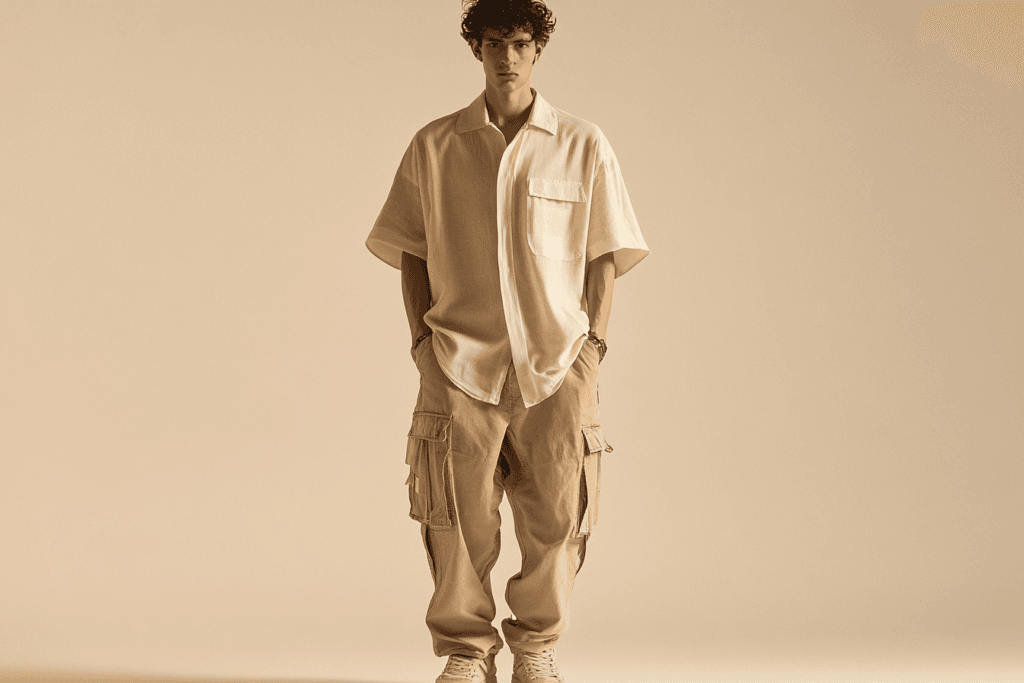
When it comes to clothing, breathable fabric is a game-changer. It’s the kind of material that lets air flow freely, keeping you cool and comfortable no matter the weather. Whether it’s a hot summer day or an intense workout, breathable fabrics make all the difference in how you feel.
Did you know that 80% of consumers associate cotton and cotton blends with breathability? That’s huge! People love fabrics that feel light and fresh against their skin—comfort truly drives preference.
For clothing brands, sourcing the right fabric isn’t just important—it’s essential. With the global functional fabric market valued at $300 billion in 2023 and expected to nearly double by 2032, it’s clear that comfort and performance matter. Choosing high-quality, breathable materials can give your brand a competitive edge and earn your customers’ trust.
Key Takeaways
- Breathable fabric helps you stay cool and comfy. It’s important for clothing brands.
- Cotton is popular because it’s soft, airy, and absorbs sweat.
- Testing fabric is important. Use tests like ISO 11092 to check breathability.
- Bamboo fabric is eco-friendly and fancy. It’s great for green brands.
- Polyester blends work well for sports clothes. They dry fast and don’t tear easily.
- Start with small orders to check fabric quality and trust suppliers.
- Learn about new fabric trends to keep your brand popular and exciting.
- Talk clearly with suppliers about what you need to get the right materials.
Why Breathable Fabric Matters for Clothing Brands
Making Clothes Comfortable to Wear
Comfort starts with breathable fabric. It helps clothes feel great all day. Picture wearing a shirt that keeps you cool in the heat. Or pants that don’t cling to your skin. That’s the magic of breathable fabrics like cotton. Cotton is soft, airy, and absorbs sweat really well.
Here’s why cotton is a top choice for comfort:
| Feature | What It Does |
|---|---|
| Soft Feel | Cotton feels gentle and smooth on your skin. |
| Air Flow | Cotton lets air pass through, keeping you cool in warm weather. |
| Sweat Absorption | Cotton absorbs sweat, helping you stay dry and fresh. |
This table explains why cotton is so popular. It’s not just comfy—it keeps you dry and cool, too.
Helping Clothes Perform Better
Breathable fabrics aren’t only about comfort. They’re made to perform well. Activewear and outdoor gear need fabrics that work hard. That’s why they go through special tests to check their quality.
Here are some tests used to check fabric performance:
| Test Name | What It Measures |
|---|---|
| ISO 11092 | How breathable the fabric is. |
| ASTM E96 | How well it lets water vapor escape. |
| ASTM F1291 | How much heat it keeps in. |
| EN ISO 9237 | How easily air moves through it. |
These tests make sure the fabric does its job. For example, air permeability tests check how air flows through the material. This is important for workout clothes and windproof jackets.

Giving People What They Want for Hot Days and Exercise
People want clothes that match their busy lives. Breathable fabric is perfect for hot weather and workouts. No one likes feeling sweaty or sticky.
Here’s what shoppers look for:
- 67% pick activewear for comfort over style or cost.
- 69% of Americans wear activewear as everyday clothes.
- 40% exercise to stay healthy, so they need breathable fabrics.
These stats show why breathable fabrics matter. From summer dresses to gym clothes, they make a big difference.
What Types of Breathable Fabrics Should You Explore?
There are many breathable fabric options to choose from. Each type has special benefits. Picking the right one depends on your brand’s goals. Let’s look at some popular choices.
Cotton and Cotton Blends
Cotton is a timeless favorite. It’s soft, light, and keeps you cool. You can use it for T-shirts or summer dresses. Cotton blends are even better. They mix cotton’s comfort with the strength or stretch of materials like polyester or spandex.
Here’s why cotton and blends are loved:
- People want comfort and versatility: Fabrics should feel good and fit many occasions.
- New textile technology: Cotton blends are now softer and last longer.
- Fashion trends like athleisure: Demand for comfy, stylish fabrics is growing.
Cotton blends are a dependable, breathable choice for any brand.
Bamboo and Bamboo Viscose
Bamboo fabrics are amazing. They’re breathable and eco-friendly. Many brands now use bamboo because it’s sustainable and feels luxurious. Bamboo viscose is silky and great for sensitive skin.
Here’s what makes bamboo fabrics special:
| Benefit | Description |
|---|---|
| Sustainability | Bamboo grows fast and leaves a small carbon footprint. |
| Comfort | It’s super soft and feels high-end. |
| Moisture Wicking | Absorbs sweat and dries quickly. |
| Thermal Regulating | Keeps you warm in winter, cool in summer. |
| Hypoallergenic | Naturally fights bacteria and suits sensitive skin. |
If your brand values eco-friendliness and comfort, bamboo is a top pick.
Modal, Tencel, and Other Sustainable Options
Sustainability is now essential, not just a trend. Fabrics like Modal and TENCEL™ are becoming more popular. They’re made from wood pulp but feel soft and breathable. These fabrics can make your brand eco-friendly and luxurious.
Here’s a quick comparison of their features:
| Feature | TENCEL™ | Modal |
|---|---|---|
| Raw Material | Wood from sustainable sources | Beech trees from managed sources |
| Water Consumption | Uses 20 times less water than cotton | N/A |
| Production Process | Closed-loop, 99% solvent recovery | Integrated pulp-to-fiber process |
| Environmental Certifications | EU Business Award for Environment | Higher environmental standards |
| Absorption Characteristics | Absorbs 50% more than cotton | N/A |
TENCEL™ and Modal are great for brands wanting luxury and sustainability. They work well for activewear and casual outfits.
Polyester Blends for Performance Apparel
Polyester blends are great for active and outdoor clothes. They work well in tough conditions while keeping you comfy. If your brand makes sportswear, polyester blends are a smart choice.
Why are they so useful? Here’s why. Polyester blends let air move through easily. This helps keep you cool during hard activities. They also pull sweat away from your skin and dry it fast. Plus, they last long, even after many washes.
Here’s a simple comparison of polyester blends and cotton:
| Attribute | Polyester Blend | Cotton |
|---|---|---|
| Strength | Stronger | Weaker |
| Stretchiness | More | Less |
| Smoothness | Smoother | Rougher |
| Shape Holding | Better | Okay |
| Sweat Absorption | Less | More |
Polyester blends also pass performance tests. For example:
- They allow more air to pass through.
- They resist tearing better with strong fabric.
- They keep their shape after washing.
These features make them perfect for sports, hiking, or casual wear. They’re light, dry quickly, and are easy to clean. If you need a tough and reliable fabric, polyester blends are a great pick.
Linen, Silk, and Wool for Special Uses
Not all breathable fabrics are for sports. Some, like linen, silk, and wool, are best for special uses. These fabrics add style and function to your clothing.
Linen is great for hot weather. It’s light, airy, and absorbs sweat well. It has a natural look and feels relaxed. Linen is perfect for summer dresses, shirts, or home items. But it wrinkles easily, so it’s better for casual wear.
Silk is all about luxury. It’s soft, smooth, and lets air flow. Silk keeps you cool in summer and warm in winter. It’s perfect for fancy clothes like blouses, scarves, or evening outfits. While it needs gentle care, its rich feel is worth it.
Wool might surprise you as breathable, but it’s very useful. Merino wool is light and wicks away sweat. It’s great for layering in cold weather or making warm, airy clothes. Wool also fights odors, making it ideal for travel or outdoor wear.
Each fabric has its own strengths:
- Linen: Best for light, casual summer clothes.
- Silk: Perfect for fancy, breathable outfits.
- Wool: Great for warm, odor-free clothing.
Think about your audience and the purpose of the clothes. Whether it’s a cool linen shirt, a silky dress, or a cozy wool sweater, these fabrics can make your collection stand out.
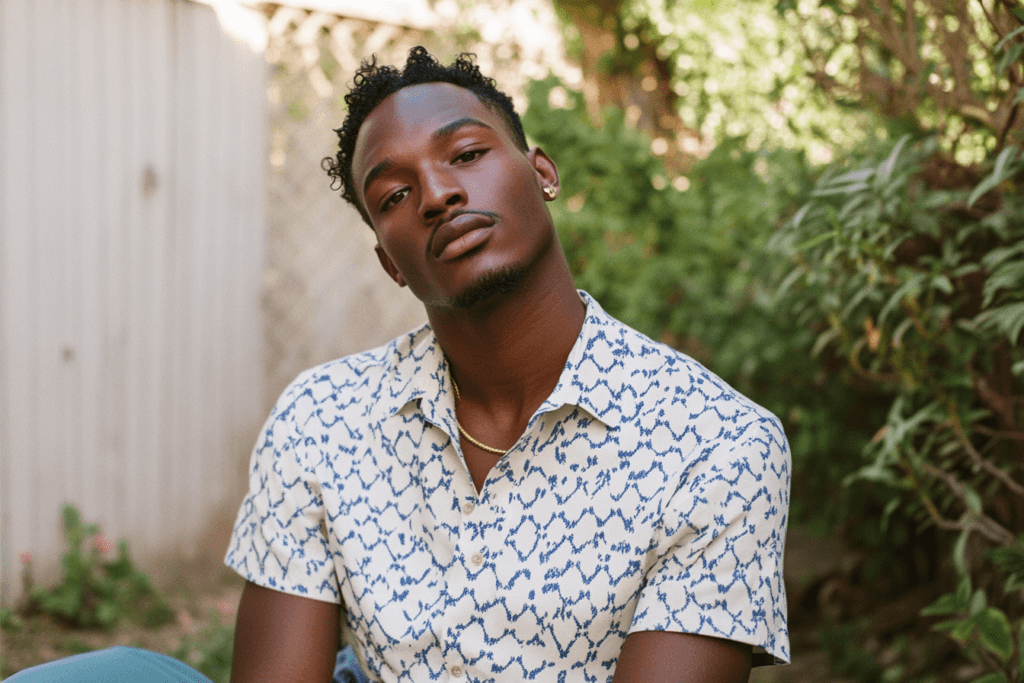
What Are the Steps to Source Breathable Fabric for Your Brand?
Finding and Choosing Trustworthy Suppliers
The first step is finding a good supplier. Start by doing research. Know what fabric you need before searching. Follow these simple steps:
- Learn About Fabrics: Understand natural vs. synthetic fibers, knits vs. wovens, and how blends work.
- Search for Suppliers: Check fabric mills, converters, jobbers, and online stores. Each has benefits and drawbacks.
- Test Fabric Samples: Ask suppliers for swatches. Check if the fabric is soft, breathable, and strong. Make sure it fits your brand’s needs.
- Discuss Terms and Orders: Talk about minimum orders, delivery times, and prices. Planning early avoids problems later.
These steps help you find suppliers who meet your quality needs. Be detailed and ask smart questions.
Visiting Trade Shows and Events
Trade shows are great for meeting suppliers in person. Seeing and touching fabrics helps you decide better. Building supplier relationships is key for success. Did you know 92% of trade show visitors look for new products? That’s a big chance for your brand.
Here’s why trade shows work well:
| Fact | Percentage/Value |
|---|---|
| Visitors looking for new products | 92% |
| Positive results from face-to-face meetings | 34x more likely |
| Buyers more likely to purchase from trade show companies | 75% |
| Revenue made by trade show exhibitors | $15.6 billion |
| Buyers more likely to trust exhibitors they meet | 72% |
These stats show trade shows are valuable. You’ll find breathable fabrics and learn about trends. Bring business cards and prepare questions. It’s a chance to stand out.
Using Online B2B Platforms
If trade shows aren’t possible, try online B2B platforms. They connect you with global suppliers. You can find breathable fabrics without leaving home. Platforms like Textilepages are very helpful.
Here’s why online B2B platforms are useful:
- Textilepages is free and links textile makers and suppliers.
- It offers tools to help small businesses grow worldwide.
- The platform focuses on trusted sources for yarn, fabric, and garments.
These platforms save time and offer many choices. Always check supplier reviews and ask for samples before big orders. Balance ease with quality to make the best choice.
Requesting Swatches and Testing Fabric Quality
When finding breathable fabric, always ask for swatches. Photos or descriptions aren’t enough. You need to touch the fabric and check its breathability. This helps you see if it fits your brand’s style. Always request swatches before placing big orders. It’s a small step that prevents expensive mistakes.
Testing swatches is just as important as requesting them. Many suppliers follow rules to ensure good quality. Here’s how testing usually works:
| Step | What It Involves |
|---|---|
| 7.2 Lab Samples | Cut a 1-meter piece from each fabric roll. |
| 7.3 Test Samples | Use a template to cut 10 smaller pieces from the lab sample. |
| 9.1 Humidity Check | Adjust the fabric to standard humidity before testing. |
These steps make sure the fabric performs well. When testing, focus on how it feels on skin, how air flows through it, and how it absorbs sweat. For activewear or summer clothes, these features are very important.
Tip: Test swatches in real-life conditions. For example, try workout fabrics during exercise. This helps you feel confident about your choice.
Communicating Your Needs with Suppliers
Talking clearly with suppliers is key to good sourcing. Be upfront about what you need to avoid problems later. Make a list of details like fabric type, breathability, strength, and certifications.
Here are tips for better communication:
- Use clear messages to avoid confusion and match expectations.
- Have regular talks to solve problems and plan ahead.
- Track supplier performance with goals and measurements.
Building a good relationship with suppliers is also important. Check in often and talk openly to build trust. When suppliers know your goals, they can provide better fabrics.
Always ask questions. For example, ask about the fabric’s materials, delivery times, and eco-friendly certifications. This shows you care about quality and helps you learn about the supplier’s skills.
Remember, sourcing breathable fabric isn’t just about picking materials. It’s about working with suppliers who share your vision. Clear communication and careful testing will help your brand succeed.
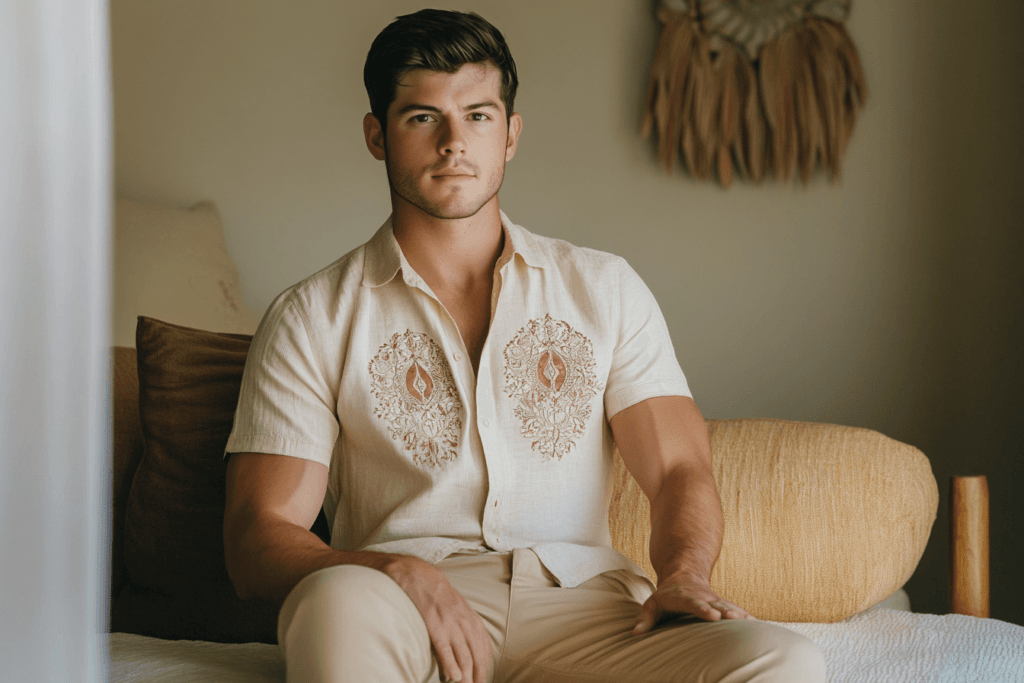
What Key Factors Should You Consider When Choosing Breathable Fabrics?
Checking Fabric Quality and Certifications
Good fabric quality is super important. It should feel nice and work well. Always check for certifications to ensure high standards. These prove the fabric is breathable, strong, and safe. Tests like ISO and ASTM show how air moves through or how sweat dries. These tests are really helpful.
Consistency matters too. A good supplier gives the same quality every time. This is crucial if your brand has special needs. For example, rainy areas need waterproof fabrics, while hot places need heat-friendly ones. Different climates mean different customer needs. In Europe, waterproof fabrics are popular. In Arizona, people prefer heat-resistant materials. Knowing this helps you pick the right fabric.
Managing Costs and Order Sizes
Budgeting for fabric can seem hard, but it’s manageable. Start by comparing suppliers. Use tools to track prices and supplier performance. For instance:
| Tool Type | What It Helps With |
|---|---|
| Supplier Performance | Tracks spending and finds ways to save money. |
| Sourcing Regions | Manages risks and finds savings in shipping costs. |
| Price Comparison | Shows price differences and helps with better deals. |
Also, watch out for minimum order sizes (MOQs). Some suppliers want big orders, which can be costly. If you’re new, find suppliers with smaller order options. Smaller orders may cost more per piece but let you test products first. Balance cost and quality for the best results.
Focusing on Sustainability and Ethics
Sustainability is very important now. Customers care about eco-friendly choices. Use fabrics like organic cotton, bamboo, hemp, or recycled polyester. These are better for the planet and feel great. Bamboo grows fast and uses fewer resources. Hemp is strong and doesn’t need chemicals.
Work with ethical suppliers who follow fair labor rules. Look for certifications that prove they care about the environment and workers. Being open about your eco-friendly efforts builds trust with customers. Using energy-saving methods also cuts costs and helps the planet.
If you want to go green, build a sustainable supply chain. Partner with suppliers who share your values. Reduce waste and focus on eco-friendly practices. This helps the earth and makes your brand look good too.
Choosing Between Local and Global Sourcing
Deciding where to get breathable fabrics is important. Should you pick local or global suppliers? Both have good and bad sides. Let’s look at each option to help you decide.
Benefits of Local Sourcing
Local sourcing means buying from suppliers near you. It’s simple and supports your community. Here’s why it might work for you:
- Quick Deliveries: Local suppliers can send fabrics faster. This helps if you’re in a rush.
- Easy Communication: Talking is simpler when you’re in the same time zone. You can even visit them.
- Lower Shipping Costs: Shorter distances mean cheaper transportation.
- Better for the Planet: Less shipping reduces pollution, which is great for the environment.
Still, local sourcing has downsides. It can cost more because labor and materials are pricier. Also, you might not find as many fabric options.
Why Choose Global Sourcing?
Global sourcing gives you access to fabrics worldwide. You can find unique materials and save money. Here’s why it’s worth considering:
- More Choices: Global suppliers offer a wide range of fabrics. For example, bamboo from Asia or wool from New Zealand.
- Cheaper Costs: Some countries have lower production costs, saving you money.
- Special Skills: Certain places are experts in specific fabrics. Italy is famous for luxury textiles, while China is great for large orders.
But global sourcing has challenges too. Shipping takes longer, and delays can happen. Communication might be harder due to language or time zones. Plus, import taxes and fees can add up.
How to Decide?
Your choice depends on your brand’s needs. Here’s a simple comparison:
| Factor | Local Sourcing | Global Sourcing |
|---|---|---|
| Delivery Time | Faster | Slower |
| Cost | Higher | Lower |
| Fabric Variety | Limited | Extensive |
| Environmental Impact | Lower | Higher |
| Communication | Easier | Can be harder |
Best Option? Use Both! 🌍
You don’t need to stick to one. Many brands combine local and global sourcing. For example, get basic fabrics like cotton locally for quick delivery. For special fabrics like bamboo, go global. This way, you enjoy the benefits of both.
Tip: Start small with global suppliers. Order samples first to check quality before making big purchases.
Balancing local and global sourcing takes effort but pays off. Think about your budget, goals, and values. Once you find the right mix, you’ll create amazing clothes your customers will love.
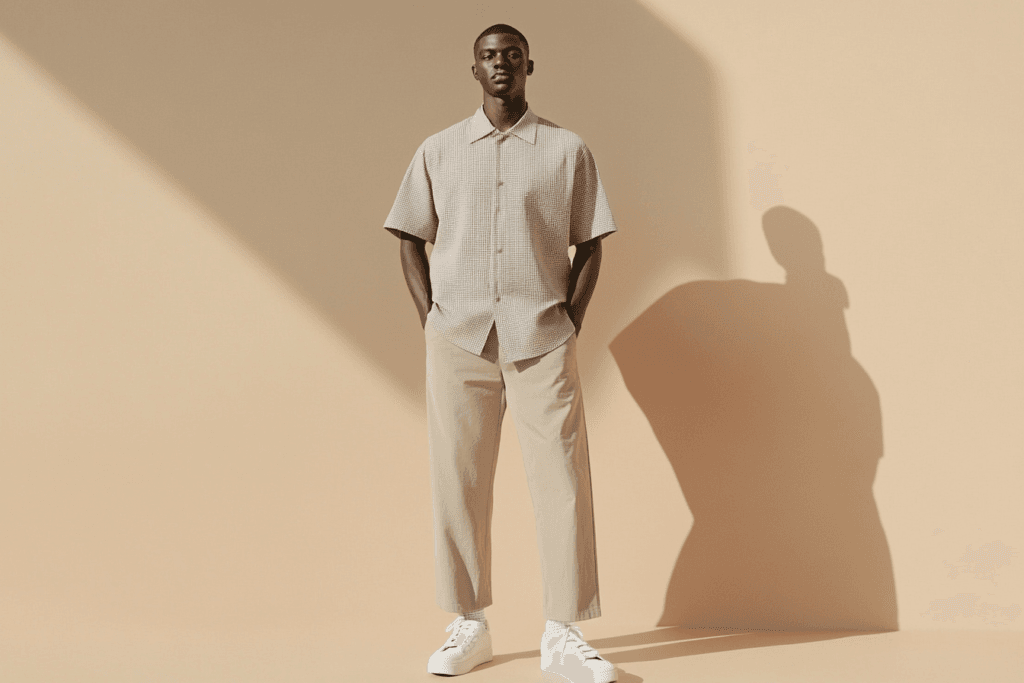
What Questions Should You Ask Breathable Fabric Suppliers?
When choosing breathable fabric for your clothing brand, asking smart questions is key. It saves time, money, and avoids problems. It also helps you trust suppliers and get what you need. Here are important questions to ask when picking a supplier.
What is the Fabric Made Of and How Breathable Is It?
First, ask about the fabric’s materials. Is it natural like cotton or bamboo? Or is it a synthetic mix for performance? Knowing this helps you see if it fits your brand’s needs.
Next, check the breathability. Ask how well air moves through the fabric. Suppliers might mention tests like ISO 11092 or ASTM E96. If you don’t know these, ask them to explain simply. You can also request a sample. Hold it to the light, feel it, and test it with moisture. These steps help you pick the right fabric.
What Are the Minimum Order and Delivery Times?
MOQ means “minimum order quantity.” This is the smallest amount you can buy. Some suppliers need big orders, which may not work for new brands. Ask about their MOQ early to avoid issues. If it’s too high, see if they allow smaller trial orders.
Delivery time is also important. This is how long it takes to make and ship the fabric. Delays can mess up your plans, so check if their timeline works for you. Ask if they can do rush orders or have ready stock. Clear timelines help you stay on track and keep customers happy.
Are the Fabrics Safe and Eco-Friendly?
Sustainability is a big deal now. Ask if the fabric has eco-certifications like GOTS or OEKO-TEX. These prove the fabric is safe for the planet and free of harmful chemicals. If your brand cares about ethics, this is essential.
Safety matters too. Some fabrics are tested to ensure they’re safe for skin, especially sensitive skin. Always ask for proof of these tests. It shows you care about quality and your customers’ health.
Pro Tip: Use a checklist of these questions when talking to suppliers. It keeps you organized and ensures you don’t forget anything.
What Support and Communication Can I Expect?
When finding breathable fabrics, good support and communication are key. Clear and reliable communication is just as important as the fabric itself. Here’s what you should look for from suppliers.
1. Quick Replies
A good supplier answers your questions fast. Whether it’s about fabric details, prices, or delivery, you shouldn’t wait too long. If they take days to reply, it’s a bad sign. You need someone who’s ready to help when needed.
Tip: Test their speed early. Send a message with questions and see how fast they respond. This shows how they’ll handle future communication.
2. Clear Information
Suppliers should explain things in a way that’s easy to understand. Whether it’s about fabric features, orders, or shipping, they should avoid confusing terms. If something isn’t clear, ask them to explain better.
Here’s what clear communication includes:
- Full answers to your questions.
- Honest pricing and terms.
- Clear timelines for delivery.
3. Help Along the Way
The best suppliers don’t just sell fabric—they guide you. They help you pick the right materials, send samples, and suggest options if something isn’t available. Some even give tips on caring for the fabric after purchase.
Note: Choose suppliers who explain things well. It shows they care about helping you succeed.
4. Problem-Solving Skills
Sometimes, things go wrong. Maybe there’s a delay or the fabric isn’t what you expected. A good supplier will help fix these problems. They might offer faster shipping or replacements to keep your project on track.
5. Regular Updates
You should always know what’s happening with your order. A reliable supplier will confirm your order, share updates on production, and notify you about shipping. These updates help you plan better.
| Communication Feature | Why It’s Important |
|---|---|
| Order Confirmation | Ensures your order is correct. |
| Production Updates | Keeps you informed about progress. |
| Shipping Notifications | Lets you track your delivery. |
6. Building a Partnership
Think of your supplier as a partner, not just a seller. A strong relationship can lead to better deals and priority service. Be polite, pay on time, and thank them for their work. Kindness helps build trust.
Pro Tip: Send a thank-you email after a successful order. It’s a small gesture that strengthens your partnership.
In summary, look for suppliers who are quick, clear, and helpful. When you find one who meets these standards, sourcing breathable fabrics becomes much easier.
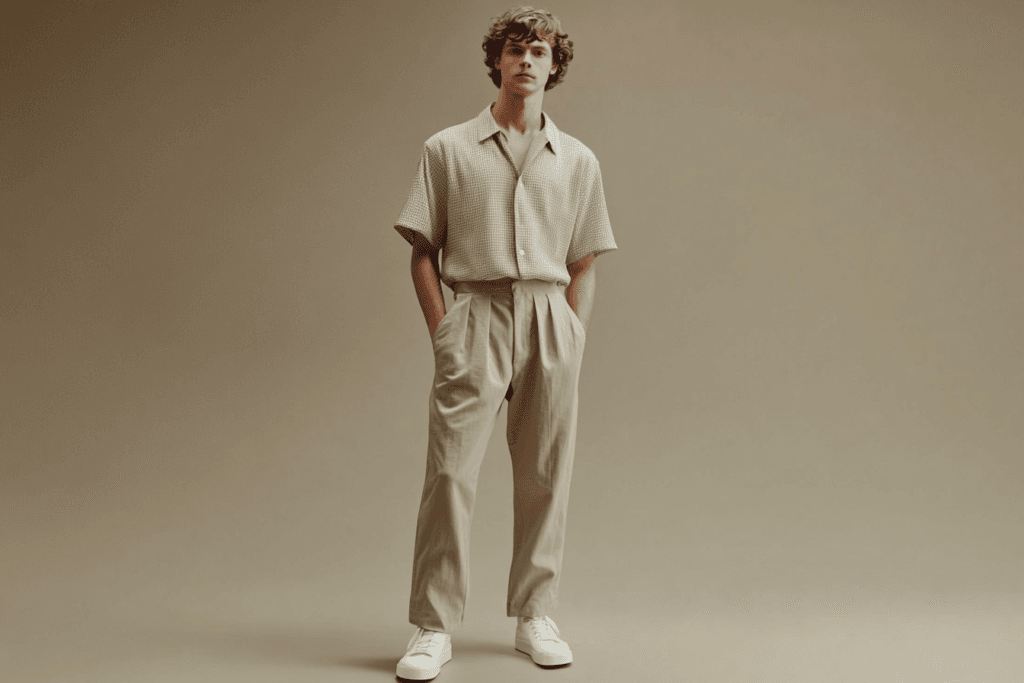
What Are the Best Tips for First-Time Sourcing of Breathable Fabrics?
Begin Small and Build Supplier Relationships
If you’re new, avoid placing big orders right away. Start with small orders to test fabric quality. This reduces risks and helps you try different suppliers. It’s a smart way to find the best fit for your brand.
Building good supplier relationships is just as important as picking fabrics. A strong partnership can save money and improve quality. Suppliers may also share new ideas and custom solutions. Here are some benefits of long-term supplier relationships:
- Save money by working together.
- Better quality as suppliers maintain high standards.
- Access to new and creative ideas.
- Easier supply chain management.
- Help during unexpected problems.
- Custom options made just for your brand.
- Stand out from competitors with unique advantages.
Talk openly with your suppliers about your goals. Over time, this partnership will become a key part of your success.
Keep Up with Fabric Trends and Innovations
Fabric technology changes fast, so staying informed is important. Did you know breathable fabrics are growing in demand by 5.8% yearly? People want clothes that are comfy and eco-friendly.
Here are some cool trends to watch:
- Fabrics that adjust to your body for a better fit.
- Self-cleaning fabrics that save water and energy.
- AI and 3D knitting that reduce waste and improve production.
- Materials that combine comfort and performance, like activewear fabrics.
Learning about these trends can make your brand stand out. Follow industry news, attend trade shows, or check fabric makers on social media. The more you know, the better choices you’ll make.
Start Quality Control Early
Quality control might seem boring, but it’s very important. Testing fabrics early ensures they meet your standards. It also helps your products perform well for customers. For example, testing fabrics can make clothes last longer and keep buyers happy.
Here’s how to do quality control:
- Ask for fabric samples and test them in real-life situations. For example, try workout fabrics during exercise to see how they handle sweat.
- Use tests like ISO or ASTM to check breathability and durability.
- Choose suppliers who follow strict quality checks. This ensures all your orders are consistent.
Starting quality control early prevents costly mistakes later. It also shows customers you care about giving them great products.
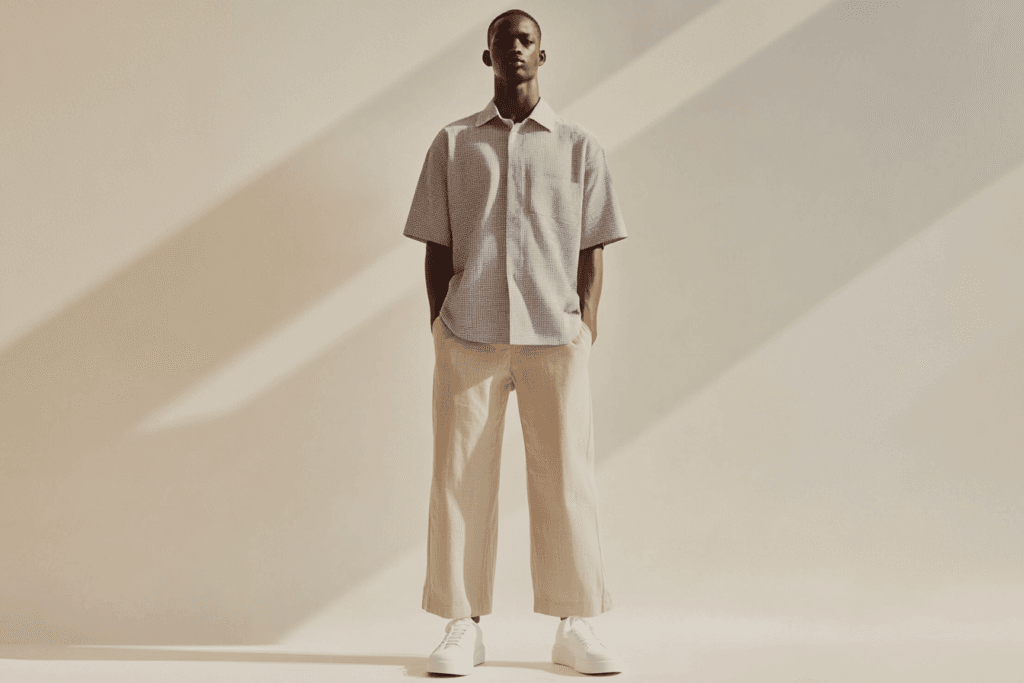
Conclusion
Breathable fabric isn’t just cloth—it’s what makes clothes comfy. It controls sweat and heat, keeping people dry and snug. Without it, clothes can feel sticky and uncomfortable, especially when exercising or in chilly weather. That’s why picking the right fabric is key to your brand’s success.
Start by following the steps we shared. Look for good suppliers, try fabric samples, and explain your needs clearly. Also, think about eco-friendly options and certifications. These details improve quality and build customer trust.
Want to try breathable fabrics? Reach out for samples and prices. Check our bamboo and modal fabrics for soft, premium comfort your customers will enjoy!
FAQ
What makes a fabric breathable?
Breathable fabrics let air pass through them easily. This helps keep your body cool and comfortable. Fabrics like cotton, bamboo, and linen are great examples. They soak up sweat and dry fast, making them ideal for hot days or workouts.
How can I test if a fabric is breathable?
Hold the fabric to the light and blow through it. If you feel air on the other side, it’s breathable. You can also wear it during exercise to see how it handles sweat and heat.
Are synthetic fabrics like polyester breathable?
Sometimes, depending on the blend. Pure polyester isn’t very breathable. But when mixed with other fabrics or treated, it can wick sweat and allow airflow. That’s why it’s often used in sportswear.
Is bamboo fabric really eco-friendly?
Bamboo fabric can be eco-friendly if made sustainably. Look for certifications like OEKO-TEX or GOTS to ensure it’s responsibly produced. Bamboo grows fast and uses fewer resources, making it a greener option than many fabrics.
What’s the best breathable fabric for summer?
Cotton and linen are top picks for summer. They’re light, airy, and absorb sweat well. Linen is especially good for humid days because it dries quickly and feels cool on the skin.
Can breathable fabrics be used in winter clothing?
Yes! Fabrics like merino wool are breathable and keep you warm. They also wick away sweat, making them great for layering in cold weather without feeling sticky or stuffy.
How do I find sustainable breathable fabrics?
Look for suppliers offering eco-friendly materials. Fabrics like organic cotton, TENCEL™, or recycled polyester are good choices. Certifications like GOTS or Fair Trade can help you find sustainable options.
Do breathable fabrics require special care?
It depends on the fabric. Bamboo and silk need gentle washing, while cotton and polyester blends are tougher. Always check the care label to keep your fabrics in good condition.
Tip: Wash delicate fabrics like bamboo or silk with care. Use cold water and mild soap to make them last longer.
Related:
1.Waterproof Breathable Textiles Market Size, Share & Trends Analysis Report By Raw Material (ePTFE, Polyurethane, Polyester), By Fabric (Densely Woven, Membranes, Coated), By Application, By Region, And Segment Forecasts, 2025 – 2030 →
2.Here’s Why Brands Should Use More Natural Fibers – And Some Who Already Are, With Success →
3.Global Waterproof Breathable Textiles (WBT) Market – Industry Trends and Forecast to 2031 →
4.Cotton Fabric and Its Use in Industrial Applications →
5.Ensuring Textile Excellence: How Textile Performance Testing Drives Quality Products and Market Success →
